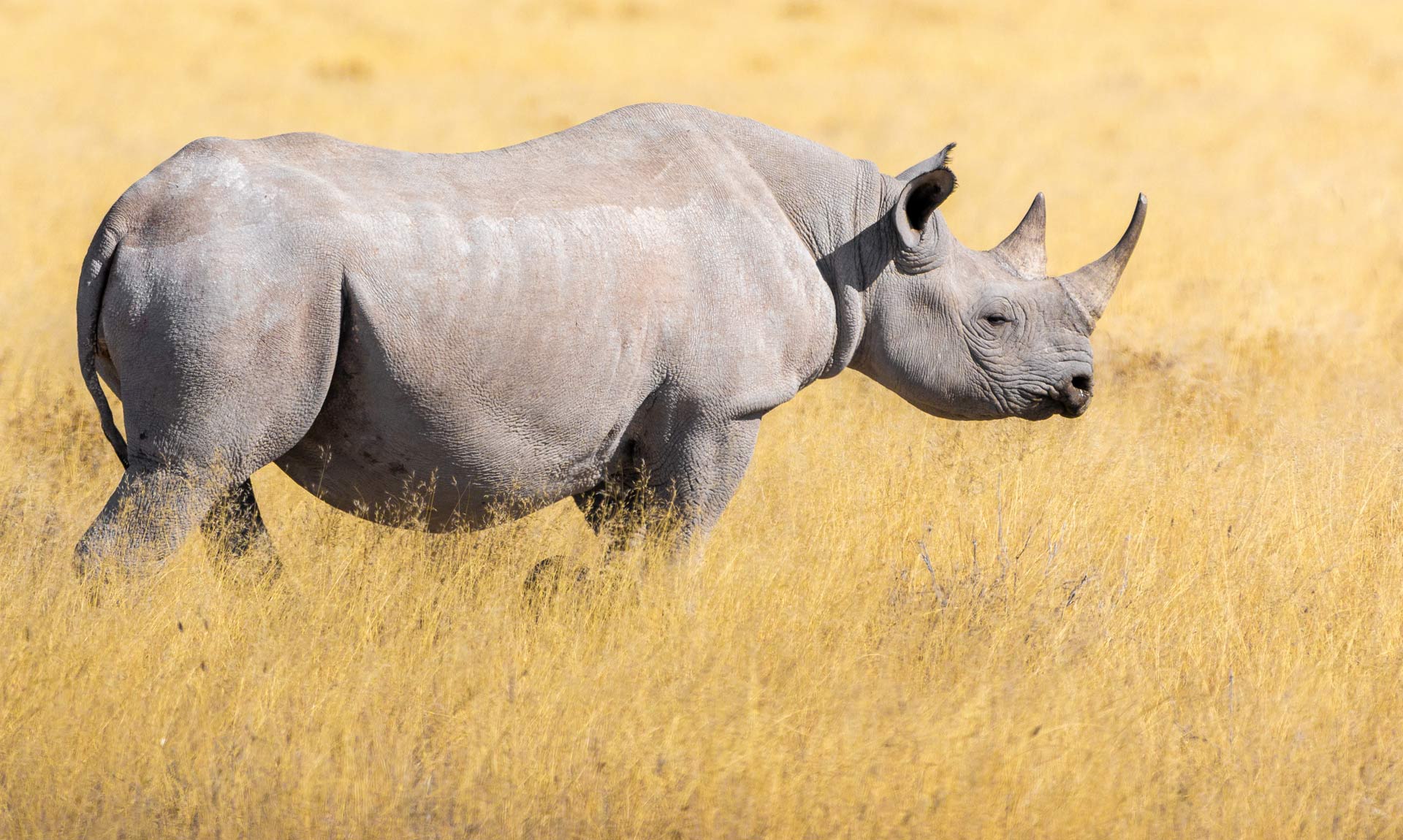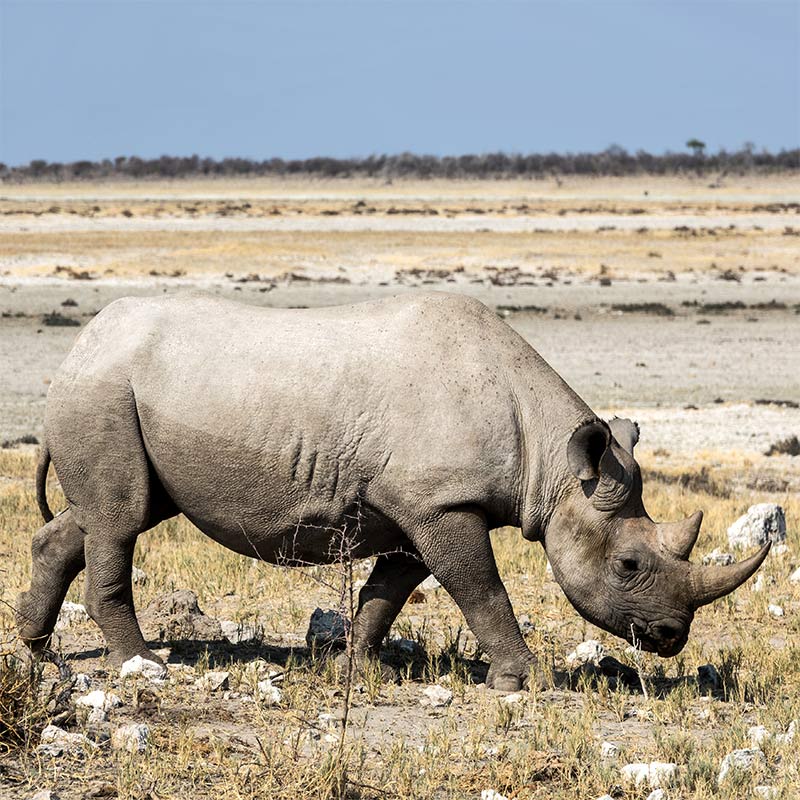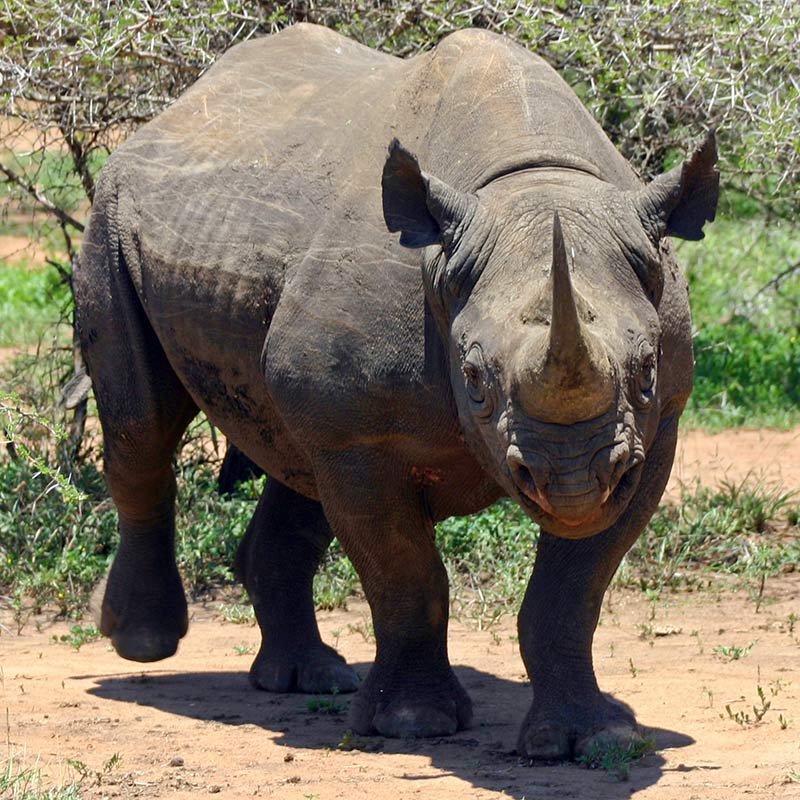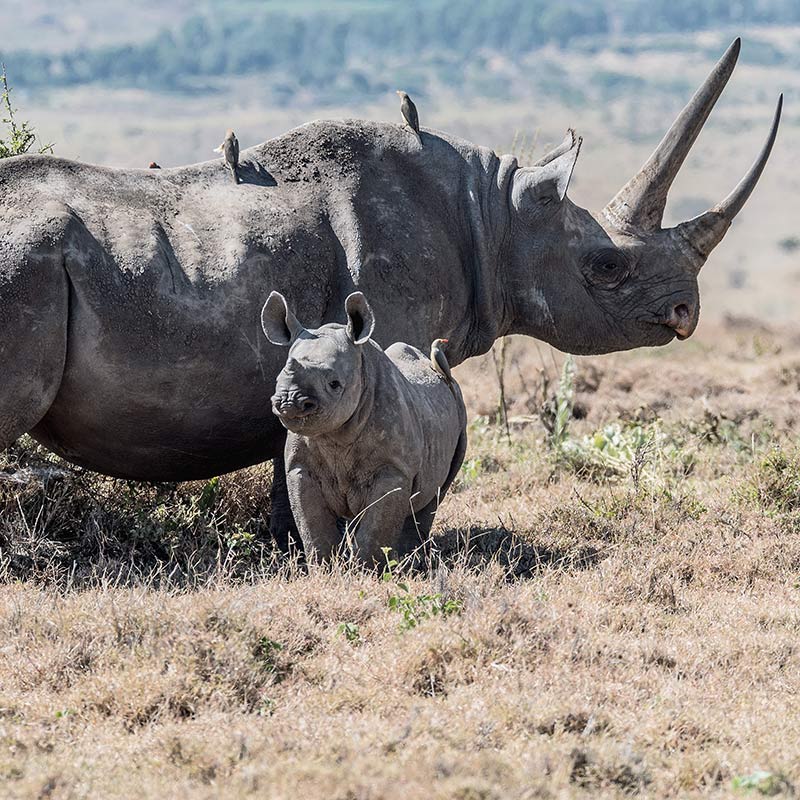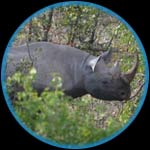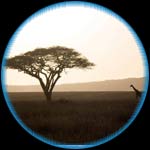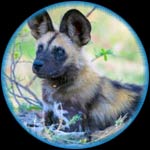BLACK RHINOCEROS LEFT
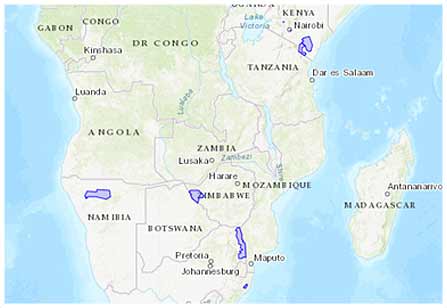
APPROXIMATELY 5000 REMAIN
 IN 1970, THERE WERE 70,000 BLACK RHINOS IN THE WILD
IN 1970, THERE WERE 70,000 BLACK RHINOS IN THE WILD
 STRONGHOLDS: ETOSHA NATIONAL PARK, LOCATED IN NAMIBIA
STRONGHOLDS: ETOSHA NATIONAL PARK, LOCATED IN NAMIBIA
 THE BLACK RHINOCEROS IS CLASSIFIED AS CRITICALLY ENDANGERED ON THE IUCN RED LIST
THE BLACK RHINOCEROS IS CLASSIFIED AS CRITICALLY ENDANGERED ON THE IUCN RED LIST
BLACK RHINOCEROS FACTS
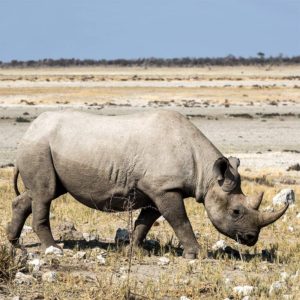
The Black Rhinoceros is also called the Hook-Lipped Rhinoceros, because of its unique pointed lips used for eating twigs and leaves. Despite its name, the Black Rhino’s color actually ranges from grey to brown. It stands between 4.5 and 6 feet tall and is between 9 and 12 feet long. Males weigh between 1,700 and 3,000 lbs, but unusually large Black Rhinos have weighed as much as 6,300 lbs. Females are smaller.
Adults are usually loners, coming together only to mate. The reproduction rate in this species is slow. Females give birth to a single calf every two to five years, after a gestation period of about 15 months. They care for their young for two to three years, or until the next calf is born. Females reach sexual maturity between 5 and 7 years old. Males mature later, at between 7 and 8 years old.
Black Rhinos typically have two horns, although some with a third horn have been seen. One substance in their horns is a protein called Keratin. Keratin has been known to protect human skin from damage or stress. This makes the Black Rhino a target for poachers, who sell their horns on the black market for use in Asian medicines.
BLACK RHINOCEROS HABITATS
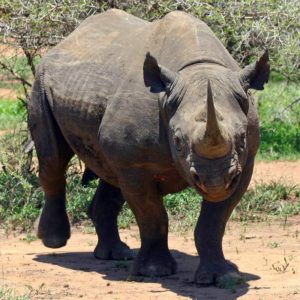 Black Rhinoceros are found in deserts, forests and grassland areas in eastern and southern Africa. Countries where Black Rhinos can be found include: Namibia, South Africa, Botswana, Kenya, Malawi, Mozambique, Swaziland, Tanzania, Zambia, and Zimbabwe.
Black Rhinoceros are found in deserts, forests and grassland areas in eastern and southern Africa. Countries where Black Rhinos can be found include: Namibia, South Africa, Botswana, Kenya, Malawi, Mozambique, Swaziland, Tanzania, Zambia, and Zimbabwe.
They may have once ranged as wide as Northern and Western Africa. However, none have been reported in these regions for decades. Today, the entire population of Black Rhinos is restricted to protected nature reserves. The world’s single-largest population of Black Rhinoceros is in Etosha National Park in Namibia.
BLACK RHINOCEROS THREATS
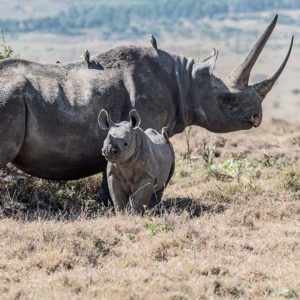
In 1970, the Black Rhinoceros population in Namibia was 70,000. A long and devastating period of illegal hunting and poaching of Black Rhinos occurred until 1995. By the late 1980s, their population in Etosha National Park had reached an all-time low of only 48.
Its distinctive two horns makes them a profitable target for poachers. Black Rhinoceros horns are in high demand on the black market for their use in traditional Asian medicines. Since 1995, conservation efforts have helped the Black Rhinoceros population increase. Today there are approximately 5,000 remaining.
However, poaching and the illegal trade of Rhino horns, continue to be the deadliest threat to this species. Political instability and militia activity have also greatly added to the problem in Africa, even in ‘protected areas’. As a result, poverty has increased for local human natives, who turn to poaching to support their families.
Another devastating blow occurred for this species was in October 2018. It was then that China lifted its ban on the use of their body parts. In November 2018, after international outcry, China postponed the regulation, which would have lifted the ban. DO SOMETHING! Your involvement can make a difference.
Other threats have included habitat loss resulting from agriculture and timber activities as well as other development. Their slow reproduction rate is another factor. Its critically small population is also particularly susceptible to disease and natural disasters. These factors could both wipe out their entire population.


